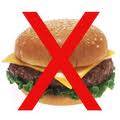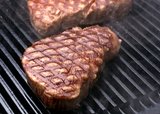Diabetes and Exercise | Controlling Diabetes: Weight Loss Tips
| | |
How to Control Diabetes with Diet and Exercise
Diabetes is a serious disease that can be life threatening. It can contribute to further ailments such as blindness, loss of limbs, and heart disease.
The bad news is that most people don't have any hope of getting better because their doctors have told them that they will have to take pills for the rest of their lives.
The good news is that with a healthy lifestyle of regular exercise and a healthy diet, the symptoms of diabetes can be eliminated and diabetes can be controlled, in many cases, without medication.
Eat Your Fruits and Veggies

Replace fatty animal products with more fruits and vegetables. They are full of complex micronutrients, antioxidants, and plenty of vitamins which all work together to help keep your body and health in tiptop shape.
Eating more fruits and vegetables also help to reduce your intake of fats, carbohydrates, salts, and sugars, which helps to stabilize your blood sugar levels throughout the day. You should commit to eating no less than two servings of fruit and no less than 6 servings of vegetables each day for best results.
Dump the Refined Foods

Instead of white pasta, get whole wheat. Instead of white rice, get brown. You may not like the taste of whole grains, which keeps you from getting them on a regular basis, but once your taste buds have had a chance to adjust you will fall in love with the rich, nutty flavors of whole grain breads.
Whole grains contain plenty of fiber that their white counterparts are void of. Fiber helps to clean the system of toxins and unneeded fats. They don't create spikes in your blood sugar levels either, which in turn helps to stabilize and control diabetes.
Limit Animal Products



Animal products can play a negative role in diabetes by destabilizing the blood sugar levels after being consumed. This is due to the amount of saturated fats, cholesterols, and salts that are usually found in these products.
If you use dairy products, use non-fat or low fat varieties. Limit your dairy intake to no more than three or four times a week. Limit your red meat intake to no more than one meal per week, if that. Limit your chicken and seafood intake to no more than two or three meals a week.
Rely on beans, legumes, whole grains, nuts, seeds, fruits, and vegetables to get the vitamins, nutrients, antioxidants, protein, and fiber that your body needs. When you do eat sugary foods, fatty foods, and salty foods, make sure to limit your consumption to half a serving in order to keep your blood sugar levels in check once you're done.
Get Some Exercise

Regular exercise is just as important to controlling diabetes as diet is. You don't have to become a gymnast or become a member of a gym in order to reap the rewards of exercise.
Walking after dinner, swimming at the pool or in the ocean, riding your bike, hiking, enjoying a Frisbee toss at the park, or taking part in the workplace softball game are all great ways to get some well needed exercise. Keep it fun and interesting, and you'll stay motivated to keep up the regimen.
Don't Forget About the Clothing

What you wear is just as important as what equipment you use to workout. You have to stay dry, comfortable, and cool throughout a workout if you expect to stay motivated and clothing is what will help you do maintain these conditions.
Wear shorts or pants that are breathable and that wick away sweat as it's created to help keep you cool. Wear proper fitting shoes even while on the treadmill or while using weights, as it's important for proper form and support of the body. If your shoes don't fit correctly, there is a potential for unnecessary blisters.
Back to Diabetes and Exercise Article.





